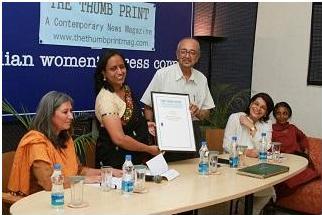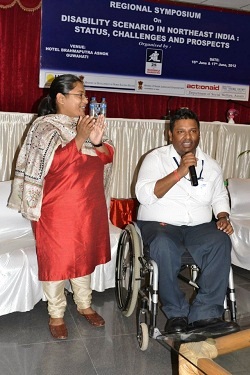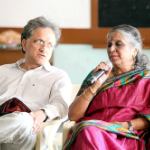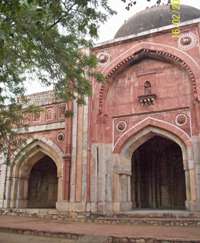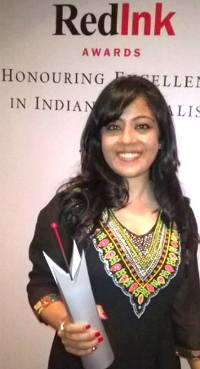These days I’m trying to remember a few nondescript things that we had witnessed as children growing up in Guwahati, Assam. One of those things was that my father used to wear a “lungi” quite regularly, especially in the summer time. He wore it till the end of his life, his other attire being spotless white pajama-kurta and later, as we influenced him, Bermuda shorts by way of relaxed wear at home in the humid Brahmaputra Valley. The lungi in question was a typical blue or green length of cotton fabric, about 3-4 yards or less, with small or large check prints on it. This lungi chronology marks our family’s residence in Guwahati from the sixties to the first decade of the millennium. Having moved from Shillong with a job and a wife, such was my father’s comfort level with the lungi that a neighbor once even commented that he resembled a “koniwalla” – a vendor of eggs who go door to door in the city’s neighborhoods. “Koni” means egg in Assamese, the principal language of the state of Assam.
This was years ago, but post the long-drawn and volatile Assam agitation against foreign nationals led by the All Assam Students Union (AASU). Therefore, the significance of resembling a koniwalla was far reaching. Almost anyone and everyone would confirm the background of the wearers of lungis. My father too was aware that mostly Muslims – settlers or long-resident citizens -- in Assam were to sport the typical green-blue check patterned lungis. However, one would mostly see poor Muslims in city streets come from far flung lower and western Assam towns and villages attired in the said lungi. Traditionally being subsistence-level farmers or small shopkeepers, this population also sold eggs, poultry, fish and at times, locally grown vegetables to city dwellers which they carried in large woven bamboo or rattan baskets slung across the shoulders on a bamboo stick. Hard labor accompanied hard sentiments meted out to them. Other than the lungi, they possibly wore a “genji” or undershirt; in better times, a shirt or a kurta, and definitely a cotton woven towel or scarf – not the beautiful famous Assamese gamosa – of the same color and weave as the lungi.
The lower Assam Muslims, especially the Bengali-speaking population, was not viewed kindly at all, even in the big city where we grew up apparently in a modern and open-minded atmosphere. While illegal immigration from neighboring Bangladesh through the porous border was a reality everybody grappled with on academic, political as well as individual levels, even those Bengali-speaking Muslims settled over a very long time – from the time of British colonial rulers who brought in other ethnic and linguistic groups as their work force -- that made “xunor Axom” (Golden Assam) a home for themselves and their progeny, were derided as “Bangladeshis”. The caste Hindus could proudly tell stories of the five Kayasthas and five Brahmins from Kanyakuvja and elsewhere coming to settle down in Assam, but not the Muslims.
To cut to the chase, everyone knows that Assam – despite its truly golden prospects – is a hotbed of unrest of various kinds. Unfortunately today, myopic policies, ethnic rivalries, and the geo-political complexity of the region contribute to turning the semiotics of a simple lungi into a complicated one. However parochial and silly it might sound, there is no ‘Lungi Dance’ so to say in this part of the country. Wearing that piece of cloth would not bestow upon one the status of a Rajnikanth, rather brand the person an “infiltrator” and hence, the ubiquitous Other. Armed clashes, therefore, would be justified, ensuing from any end of the spectrum. And haven’t we seen so many of them till date?
No wonder then, “Bodoland”, where recent clashes killed more than 40 individuals, mostly Bengali-speaking Muslims, is (again) the central focus of political parties, academics and social commentators. Majority groups and minority factions, clay-footed government policies both at the Center and the State level, and a public perception of being marauded and overrun by the dreaded minority are the various ingredients in this vicious soup. It is important to note what Sanjoy Hazarika, Director of the Centre for North East Studies and Policy Research at Jamiia Millia Islamia, New Delhi, said in one of his recent (*pre-election*) columns (https://en-maktoob.news.yahoo.com/complexity-conflict-assams-bodoland-110701920.html): “For long, there has been growing public displeasure at the politics of expediency and lack of accountability about the way governments have rushed through accords with armed groups.”
This alone sums up in a few words about what is not right with the so-called peace processes all over Assam, including the North East. For all we wish, it becomes difficult to accept, even for our elites and intellectuals, that our Golden Assam is blessed to have communities, ethnicities and linguistic groups that speak myriad tongues, wear a variety of outfits, and eat diverse cuisine, and would continue to do so.
Perhaps then peace will come only as Nelson Mandela had proclaimed: “If you want to make peace with your enemy, you have to work with your enemy. Then he becomes your partner.” The saddest part is, in this context, the “enemy” is created by vested interests.
My father was in the habit of listening to Radio Moscow or even Peking (Beijing now) for his favorite opera numbers, his taste considered eclectic by the neighborhood Sahitya Sabha in the Japorigog area of Guwahati of which he was a member. We as children had the pleasure of learning and performing both Rabindra Sangeet and Borgeet. It’s a pity that listening to Bangladeshi radio channels in lower and western Assam would incur the wrath of a violent majoritarian politics, even if it was for the simple pleasure of enjoying music other than the scintillating Bihu numbers, lokageeti, and Assamese film songs.
I still remember the conversation between one of the koniwallas and my father, during a particular election time. “Korta, bhoye bhoye jigai (Sir, allow me to ask for I’m scared),” he had said. “Kaare vote dei (who do I vote for)?”
“Don’t you live in Assam?” Father had laughingly retorted. “Go by who’s best for your region, not your lungi.”
Then our election results are soon going to show us how the emperor is clothed. Or not.








